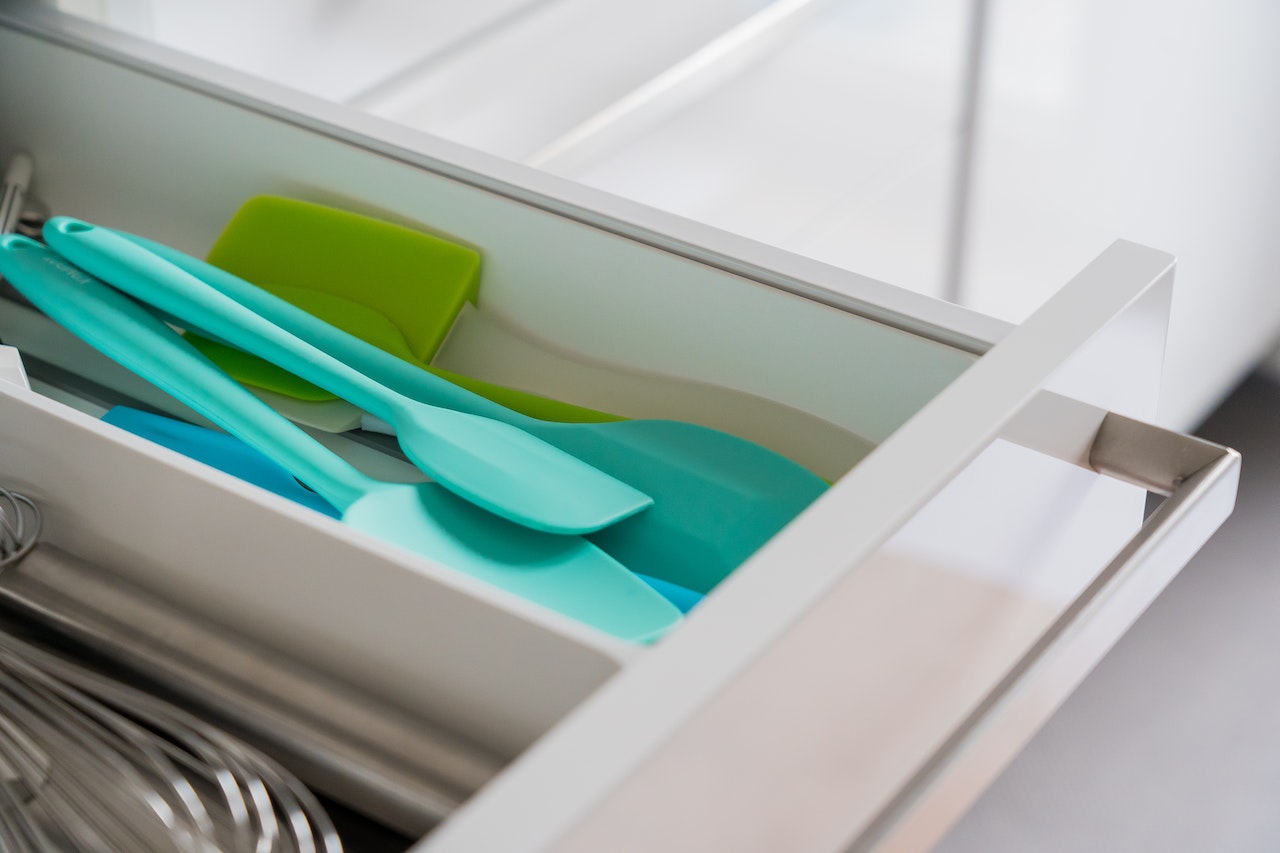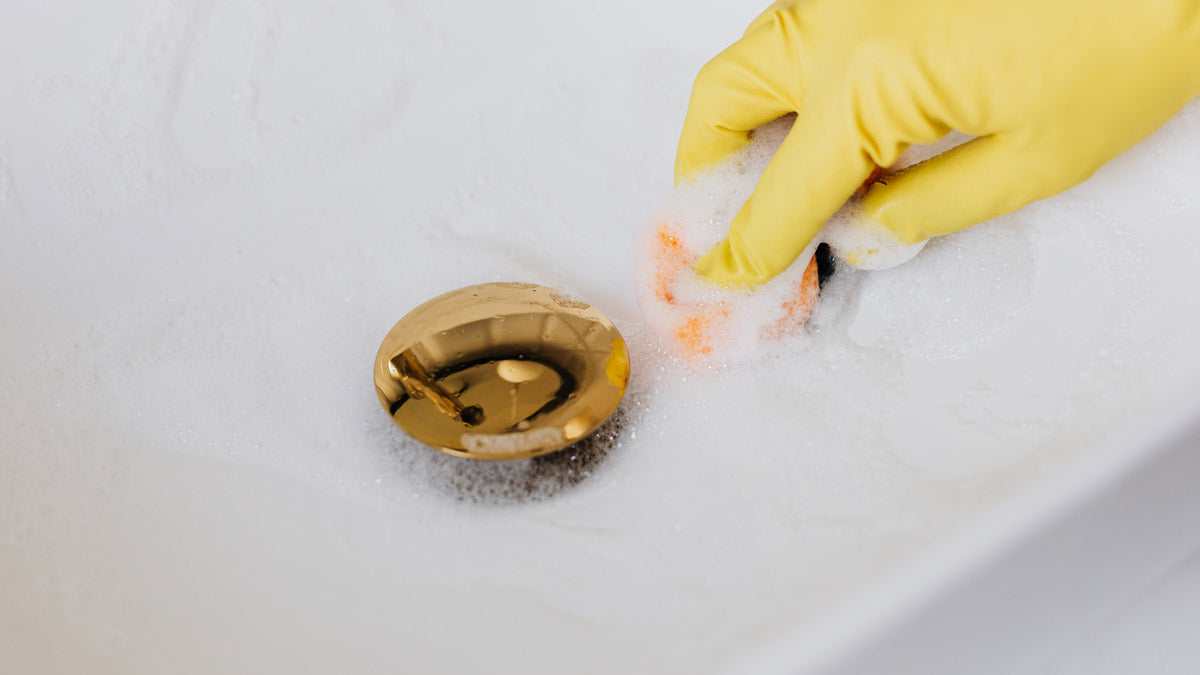
How to Clean Silicone
Silicone rubber, a more environmentally friendly alternative to plastics, is found in many parts of our homes for its durability and high resistance to heat and stains. It’s in your favorite bakeware, including your spatulas and molded cupcake pans, as well as in your cookware, like tongs and oven mitts. You’re probably also holding one in your hand right now — your phone casing!
While they are mostly scratch- and stain-resistant, you will still need to wash them every after use to keep them clean and disinfected. This is also a good way to prolong their service life.
How to Clean Your Silicone Products at Home

Food-grade silicone rubber continues to penetrate more households around the world because unlike teflon, it is not known to react with food under high heat and pressure. Discover the most common ways to clean your silicone products at home.
- Dishwashing Soap and Water (By Hands)
This is the easiest and most effective way to clean most homeware products with silicone rubber material:
- Add 1-2 drops of your favorite dish soap on a wet (but not dripping) sponge.
- Clean the silicone product as you would your regular dishes. Try not to use the harder side of the sponge to avoid scratching the surface. You can also use a brush with soft bristles for stained silicone.
- Rinse your silicone product with clean water, and let it dry.
Soapy, Warm Water
When dish soap is not enough for overly greasy items, try adding warm water in the equation:
- If your silicone ware is still greasy, fill a small basin with warm water and a few drops of dishwashing soap. The warm water will cut through the grease and make it easier to clean.
- Protect your hand with gloves and start cleaning the silicone with soapy water and a soft sponge or a soft brush.
- Rinse with cold or lukewarm water and let dry.
Pro tip: Use warm water instead of hot water because silicone can absorb odors when exposed to hot water.
- Dishwasher
If you lack time, throwing them in the dishwasher works, too:
- If you used your silicone ware in cooking, allow it to cool off before cleaning it.
- Place it on the top or bottom drawer of the dishwasher away from anything sharp.
- Add your favorite soap and let the dishwasher run normally on high temperature.
- After the rinse cycle, use a clean, dry cloth to make sure the silicone rubber is dry before storing it.
Pro tip: Check with the manufacturer if your silicone rubber utensil is dishwasher safe.
How to Remove Stains on Silicone

Some forms of silicone are highly averse to stains, but they’re not 100% stain resistant. This is true, especially for food that stains like beets, turmeric, carrots, and red cabbage. Here’s how to remove stains from your silicone products, including toys:
- White Distilled Vinegar and Water
While a mild dish soap and hot water will usually do the trick, you can also try this as an alternative method:
- Make a solution that’s equal parts vinegar and water.
- Spray the solution on the stained area and let it sit for a few hours and re-spray if necessary.
- Afterwards, you can manually scrub it with dish soap and a mild sponge. Alternatively, you can place it in the dishwasher on a normal cycle.
- Make sure to wipe it dry before storing it to prevent mold forming.
Pro tip: If the stain is still there, soak it in distilled vinegar at normal strength (not diluted).
Hydrogen Peroxide
Hydrogen peroxide works wonders for removing stains and other forms of discoloration.
- In a small basin that can fit all the silicone rubber items you’ll need to clean, pour hydrogen peroxide enough to cover the stained items.
- Let them soak overnight.
- The next day, remove the items and rinse them with clean water.
- You can also opt to double-clean them with a soap dish and a sponge before rinsing.
- Use a clean cloth to wipe the silicone items and let them air dry before storage.
Heat in the Oven
Use this as your last resort and remember to check if your silicone rubber can handle the heat.
- When your silicone kitchenware is greasy and smelly, it’s time to preheat the oven.
- Afterwards, place your silicone kitchenware inside and bake them for about 15 minutes over 350 degrees Fahrenheit.
- Once done, let them cool before soaking them in soapy water and cleaning them with a sponge.
- Rinse the items and let them dry before storing them.
Pro tip: Make sure the kitchenware is 100% made of silicone or it can withstand high heat.
How to Get Rid of Silicone Mold and Mildew

The EPA describes mold as “microscopic fungi…(that) can thrive on any organic matter.” Meanwhile, mildew forms in areas with high moisture or spaces where air is inadequate. If you store silicone ware inside cabinets before drying them completely, mold and mildew may form. Here are ways to combat them:
- Boil the Silicone Rubber in Water Over the Stove
Another effective way to soften grease and food particles that dried on your silicone rubber is with boiling water.
- Boil water in a large pan.
- Drop the silicone rubber items on the pan and let them boil at least 350 degrees Fahrenheit for up to 10 minutes. This will help soften the grease and dirt for easier cleaning.
- Remove the items and let them cool a little before washing them thoroughly in soapy water.
- Rinse properly and use a clean cloth to dry the items.
- Let them air dry on the kitchen counter to make sure they’re completely dry before storing them again.
- Use a Commercial Mold and Mildew Cleaner for Kitchenware
There are commercial mold and mildew cleaners for silicone. However, not all of them can be used on items that are in the kitchen as they may leave chemicals on the silicone. Always check the product’s label and instructions before using.
- Prepare your materials, including your commercially-bought mold and mildew cleaner that’s safe for kitchenware use and a soft sponge or a silicone brush.
- Read the instructions on the product label and follow them carefully. Wear gloves when necessary to avoid skin irritation.
- Apply the cleaner on the affected areas and let the cleaner sit on the silicone rubber utensils over a recommended time.
- Use a sponge or a rubber brush to clean the items.
- Rinse them thoroughly before letting them dry completely.
What to Avoid When Cleaning Silicone

Silicone rubber is flexible and durable that’s why you can find it in a lot of different items at home. However, it’s important to know how to clean it properly to avoid damaging it and prolong its lifetime.
- Do not use abrasive cleaners like scouring pads. These can scratch your silicone rubber’s surface which can later on make it more difficult to clean.
- Do not use harsh chemicals such as concentrated sulphuric acid and hydrofluoric acid. They can be harmful to you and may damage the silicone’s properties and may make it unsafe to use.
- When boiling to clean silicone rubber, make sure that the item can withstand high heat.
- Do not use bleach or ammonia to clean your silicone rubber products. Also be sure to avoid alcohol-based cleaners since they can damage silicone.
Frequently Asked Questions (FAQs)

If you have more questions about the best way to clean your silicone rubber items at home, check out this FAQ:
- Can you use alcohol to clean silicone?
It is not encouraged to use alcohol to clean silicone rubber as it may damage it in the long run. However, alcohol can be safely used to sterilize medical-grade silicone rubber. Check with the manufacturer if your silicone ware can manage alcohol exposure.
- What’s the best way to sterilize silicone?
The best way to sterilize silicone at home is to wash it with warm, soapy water, followed by a rinse with hot water. For additional sterilization, soak the silicone items in a solution of 1 part white vinegar and 3 parts water for 10-15 minutes, then rinse thoroughly. Alternatively, you can use a mixture of 70% isopropyl alcohol and water for a quick wipe-down. While methods like Ethylene Oxide, Electron Beam Irradiation, and Gamma irradiation are used industrially, these home methods effectively clean and sanitize silicone safely.
- Is it a good idea to boil, steam, microwave silicone to sterilize it? Will this make the stain get harder to remove?
Boiling or steaming silicone is generally safe for sterilization, as silicone is heat-resistant. However, excessive heat can sometimes make stains more difficult to remove, as it may cause the material to expand and contract, potentially setting stains. Microwaving silicone is also effective, but first, ensure it's microwave-safe. Avoid prolonged exposure to high temperatures, as this can degrade the silicone over time, making it less flexible and more prone to staining.
- Can you use soap to clean silicone?
Yes, you can use mild dish soap like enzymatic or plant-based dish soap to clean your silicone rubber items at home, including silicone spatulas and silicone toys.
- Can you use vinegar to clean silicone?
Vinegar is a mild acetic acid and can be used to clean silicone. It’s a great way to help remove dirt, grime, and food particles from silicone. You can use it in conjunction with baking soda, especially when dealing with hard-to-manage greasy items.
- Can you use bleach to clean silicone?
It is not advisable to use strong commercial bleach to clean silicone. These can be harsh chemicals and may damage your silicone’s properties and deteriorate its quality. If your silicone is light-colored and stained by darker foods, you can apply hydrogen peroxide or chlorine bleach to the stain to remove it, but be sure to use appropriate safety measures when using bleach.
- Can you use the dishwasher to clean silicone?
You can definitely wash your silicone rubber items in the dishwasher on a regular hot cycle. Make sure to place the silicone items away from sharp objects like knives or anything that may poke a hole or scratch it.
- What is the easiest way to clean up silicone?
The easiest and fastest way to clean your silicone rubber is with a mild dish soap and a soft sponge. It will not damage the material or leave any harsh chemicals behind, making it safe for kitchenware and baby’s toys.
- Does freezing help when cleaning silicone?
Yes, freezing can help when cleaning silicone. Freezing silicone items makes stains, such as food residues or adhesives, more brittle and easier to scrape off. Additionally, it can help eliminate odors, as freezing kills some bacteria and mold that may be present on the surface.
Tips to Preserve the Quality of Your Silicone Products

You can preserve the quality of your silicone rubber with these helpful tips:
- Clean silicone rubber items after each use. This will help prevent the build-up of dirt, grime, and food particles that can leave hard-to-remove stains. For children’s toys, you can wash them daily using warm, soapy water.
- Use mild dish soap and water for the regular cleaning routine before trying other methods like boiling them in water. Puracy’s natural dish soap is perfect for silicone rubber items at home, including kitchenware items and your baby’s toys.
- When a kitchen utensil made of silicone rubber seems to have a strong smell, soak it in vinegar and baking soda solution.
- If it’s discolored, soak it in hydrogen peroxide overnight.
- Avoid using silicone rubber kitchen utensils for cooking oily food or foods that stain.


























